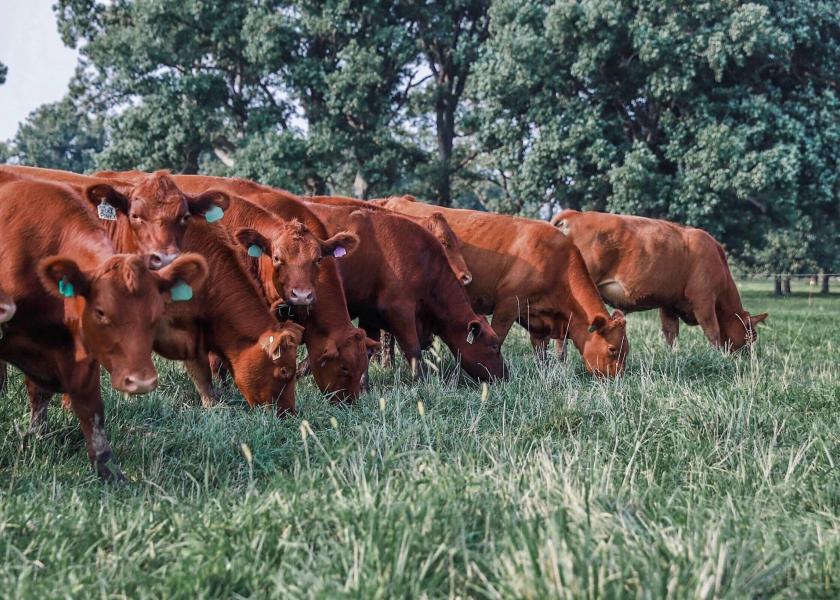I’m a Drover: Niche Model Gives Young Ranchers Market Adaptability

In Illinois, three young ranchers have set out to change the direct-to-consumer market in their community. Tri-Point Ranch markets its grass-fed beef to its local community almost entirely online through its marketplace, Graized. By offering both the product and the service, they not only cut out the middlemen, but are also able to be a voice to advocate for the animal agriculture industry.
“There is a lot of misperception around production agriculture, about where meat comes from and how it’s produced,” co-founder Kolten Postin says. “Rather than have someone else tell our story, we decided to go into business for ourselves and be active in explaining our process.”
The ranch was founded by friends Kolten Postin, Tom Weger, and Luke Frantz after graduating from the University of Illinois and Illinois State University respectively, in early 2016. All three come from multi-generational farm families, with experience in cattle, hogs and crops.
After getting the ranch up and running and taking time to raise market-ready cattle, they launched Graized in January 2019. Taking a niche model approach lowered the barriers to entry, while filling a demand opportunity in their area. Beef orders come in online through Graized, along with several local grocery store and restaurant partners, and the marketing is done primarily through social media and community outreach. The beef is then delivered locally or shipped around Illinois and the states surrounding.

“Feedlots cost a lot of money up front to get up to speed, so we saw this as a more niche market opportunity and saw the demand to support that in our area,” Postin says. “We recognize that consumer shopping trends are going more online and trending more to home delivery, versus brick and mortar stores, so we designed ourselves around an Amazon-type model.”
Networking directly with shoppers and retail outlets such as restaurants provides an opportunity to tell the story of their ranch, their grazing practices and share the benefits of grass-fed beef.
“We take a more intensive approach than just releasing cattle out onto an open pasture and letting them graze. We’ve done a lot of research on rotational grazing and one of our pastures is broken into 20 different paddocks that we rotate the cattle to a different one daily,” Postin says. “It’s better for the grasses and recycling nutrients, but the cattle aren’t trampling and wasting as much grass and areas aren’t getting over grazed.”
It’s a balance between the health of the cattle, the health of the land and the health of the soil, he says. And that can be used in marketing and sharing the story of the beef.
“It’s not just throwing darts at a wall and seeing what sticks. I try to go in and present value when talking to a restaurant partner,” Frantz says. “Grass-fed is great for a lot of them but being local is a big selling point too. If they put an order in, sometimes we can get it to them the same day, which isn’t the case with [major restaurant] suppliers. Commercial or consumer we ship and deliver as quickly as we possibly can.”
Currently, Graized sources cattle from their own Tri-Point Ranch, but the flexibility of the consumer purchase model allows for expansion, both in shipping area and in partnership with other producers, relatively easily in the future.
“One of the reasons we separated Graized from the ranch is to seamlessly source [beef] from other local producers,” Postin explains. “We want to be able to partner with other producers as we see our demand increase, and they would have an outlet for their beef as well.”
This flexibility has also helped them stay agile in the current market with the impact of the COVID-19 pandemic. Frantz notes that demand has increased dramatically, lowering their inventory, but is also allowing the ranch to grow and scale up their herd.
“I was nervous about our commercial side [the local grocery store and restaurant outlets], but they’ve adapted well,” says Frantz. “That’s why we like having the balance of both commercial, and consumer outlets. If one trails off, generally the other will pick up. I’ve had consumers ordering half or whole beef as well.”
Related:
I’m a Drover: HeartBrand Beef Brings Opportunity for Texas Producers







